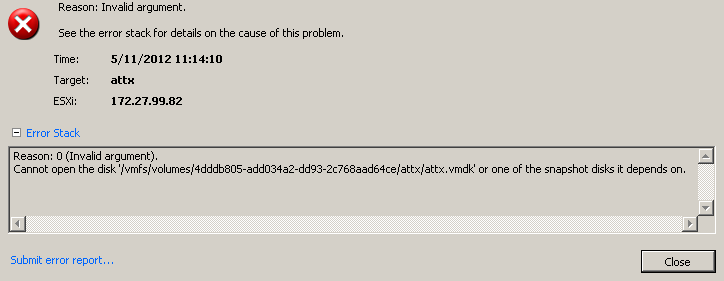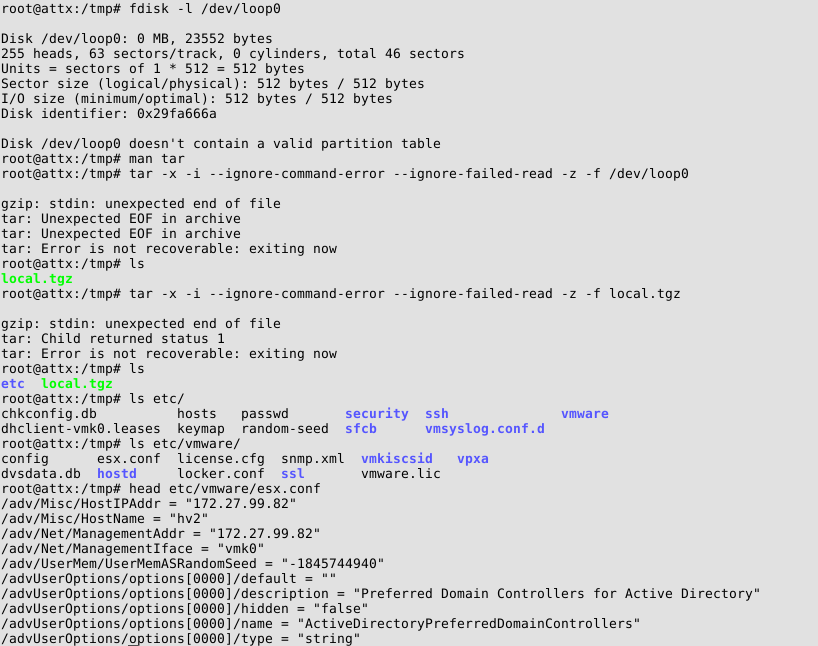First of all, I hope you all had a good start to 2014. Having some time off “between the years” (which is a German saying for the time between Christmas and NYE), I caught up on several virtualization security topics.
While virtualization is widely accepted as a sufficiently secure technology in many areas of IT operations (also for sensitive applications or exposed systems, like DMZs) by 2014, there are several recent vulnerabilities and incidents that are worth mentioning.
First of all, a rather old vulnerability (codename “VMDK Has Left the Building“) was eventually patched by VMware, the day before Christmas’ eve (honi soit qui mal y pense… 😉 ). While the initially described file inclusion vulnerability cannot be exploited anymore, first tests in our lab show that attempts to exploit the vulnerability lead to a complete freeze of the shared ESXi host. We still need to dig deeper into the patch and will keep you posted.
On November’s patch Tuesday, an important vulnerability in Hyper-V was patched by Microsoft. The bulletin does not provide a lot of details as for the vulnerability, but the relevant sentence is this one: “An attacker who successfully exploited this vulnerability could execute arbitrary code as System in another virtual machine (VM) on the shared Hyper-V host.”. This does not allow code execution in the hypervisor. However, Hyper-V’s architecture comprises the so-called root partition, which is a privileged virtual machine used for all kinds of management functionality. This means that code execution in this particular virtual machine most probably will still give an attacker complete control over the hypervisor. Even without this root partition, the vulnerability would be one of the worst-case vulnerabilities in the age of Cloud computing, provided that MS Azure employs Hyper-V (which can be considered a fair assumption. Still we have no distinct knowledge here). Again, we’ll have a closer look at this one in the near future.
At the end of December, OpenSSL suffered from a virtualization-related incident. The shared hypervisor was compromised using a weak password of the hosting provider. While password-related attacks are not specific to virtualized environments, it emphasizes the need for secure management practices for virtualization components. This sounds like a very basic recommendation, but many security assessments we conducted in this space resulted in the need to include “attacks against management interfaces” in the top ERNW virtualization risks, which we cover in our virtualization and cloud security workshops. Also we mentioned this in some presentations and research results.
As the described events show, virtualization security will remain an important topic in 2014 (even though marketing material suggest to simply adopt virtualization – I won’t give any links here, you’ve probably already seen plenty 😉 ). We will cover several aspects during this year’s Troopers edition. While our workshop on “Exploiting Hypervisors” is already online (for the detailed description, see here), one talk is missing: Due to some rather strict NDAs, we can’t provide any details so far (but if you’ve read the MS13-092 credits carefully, it shouldn’t be too hard to guess 😉 ).
I hope you’re looking forward to 2014 as much as I do, stay tuned,
Matthias
Continue reading


